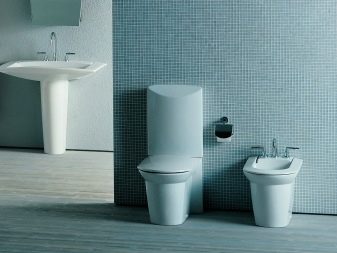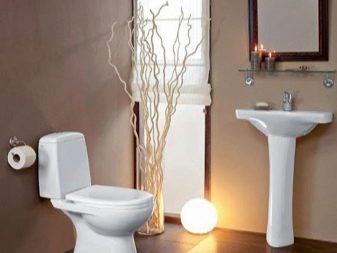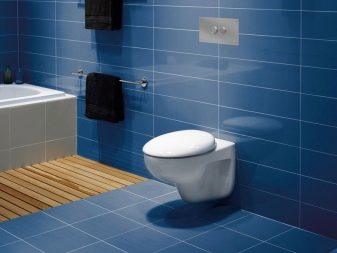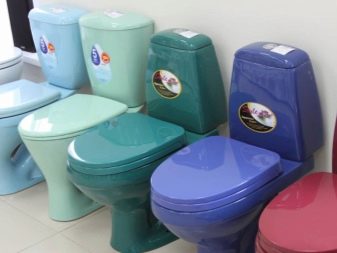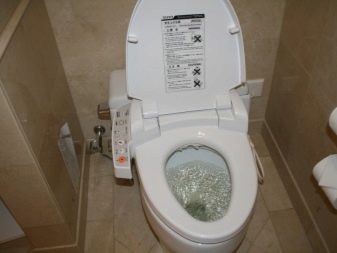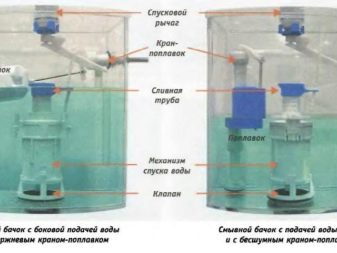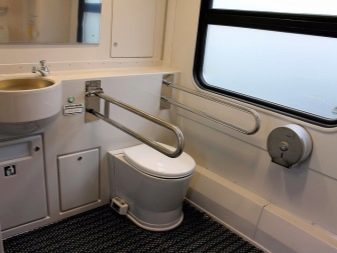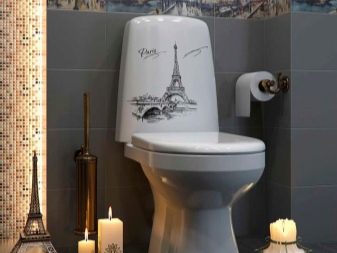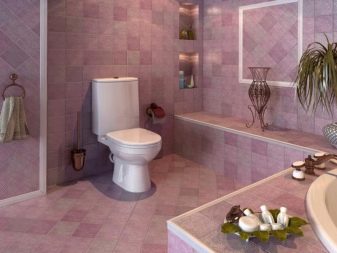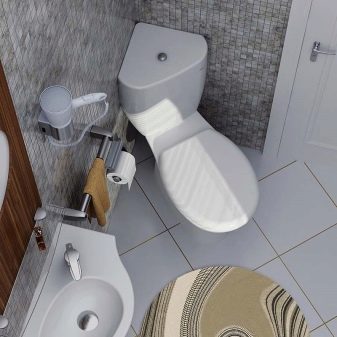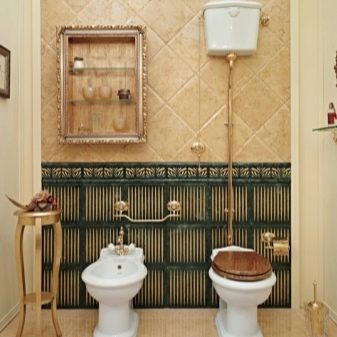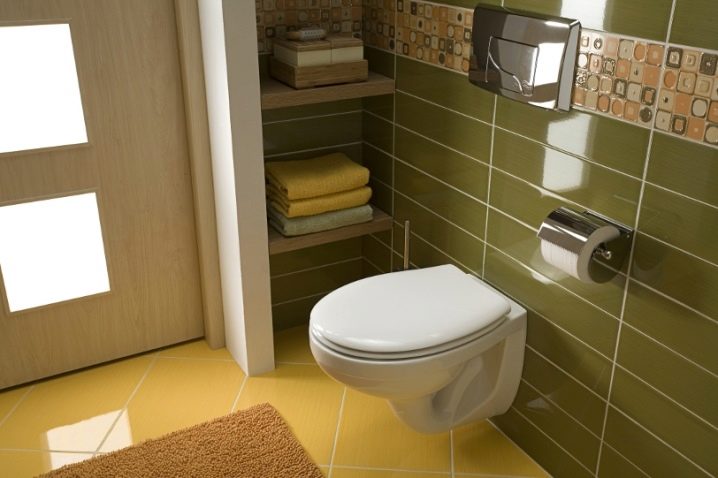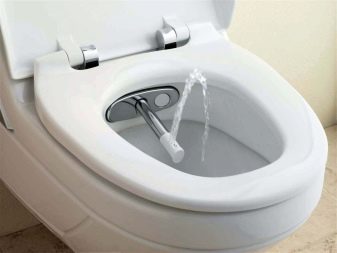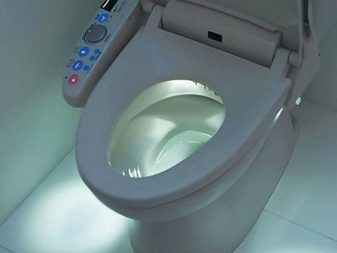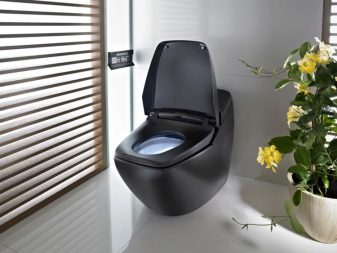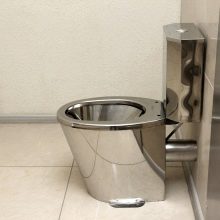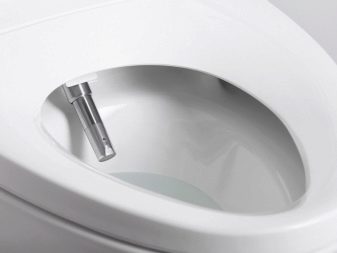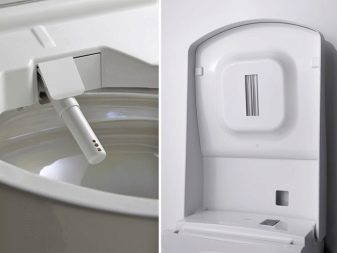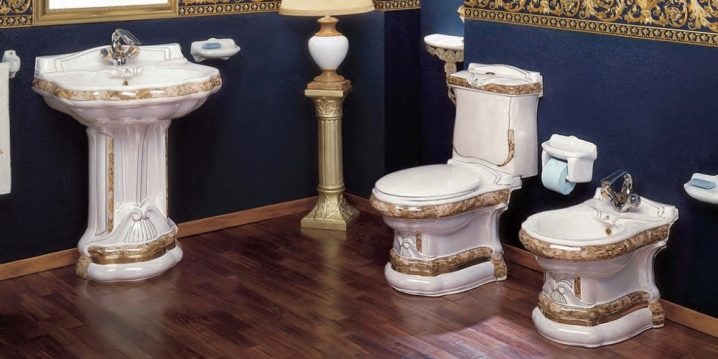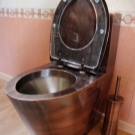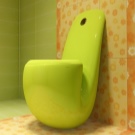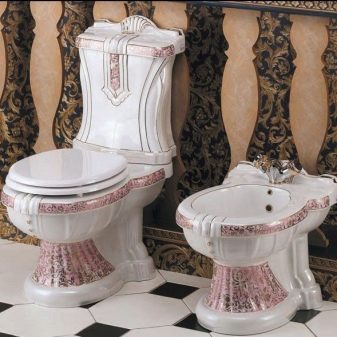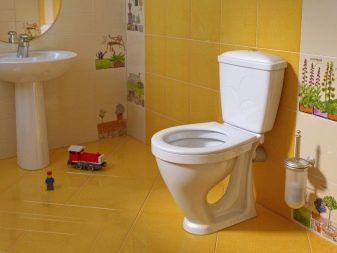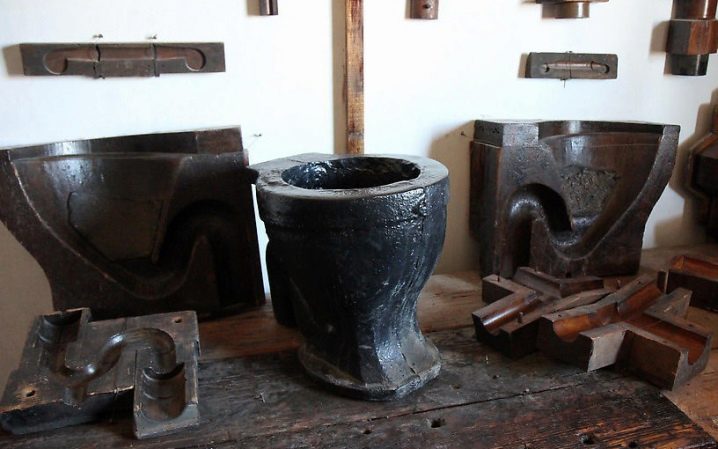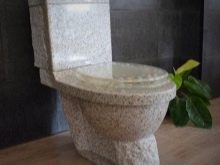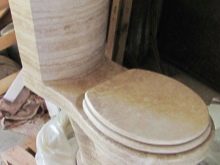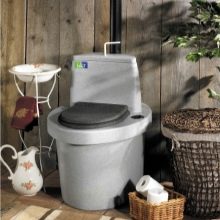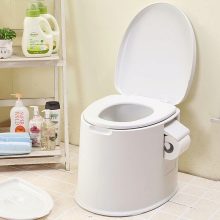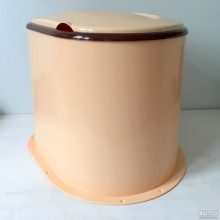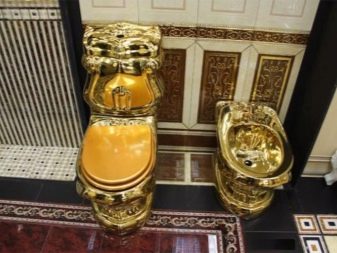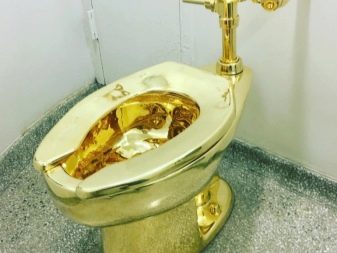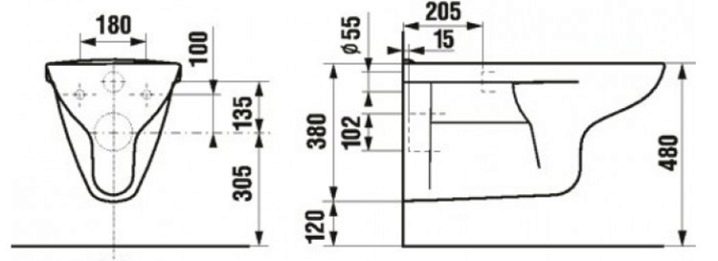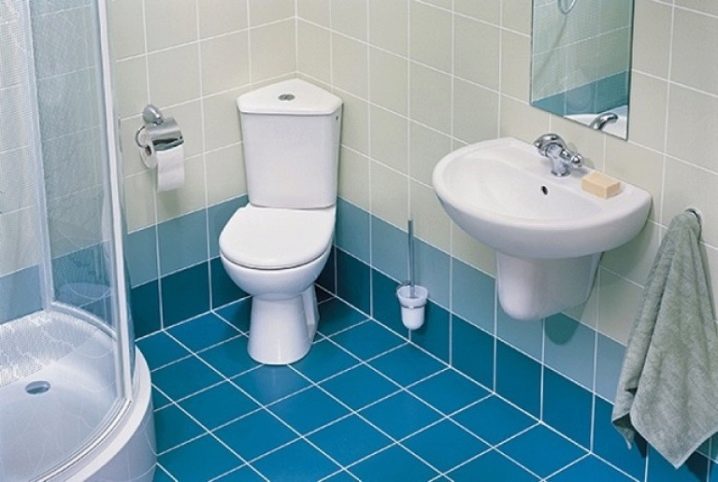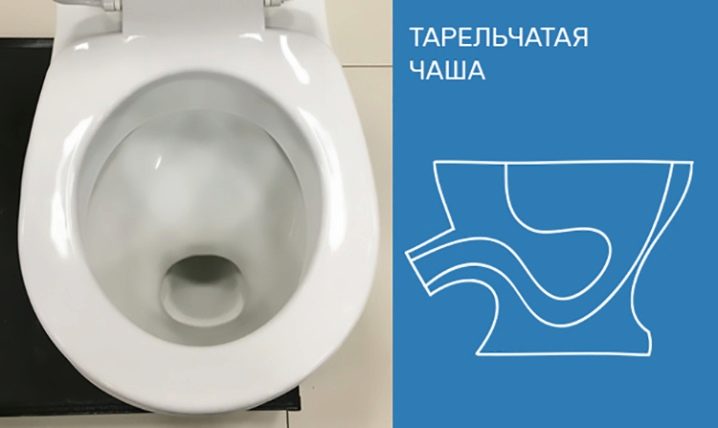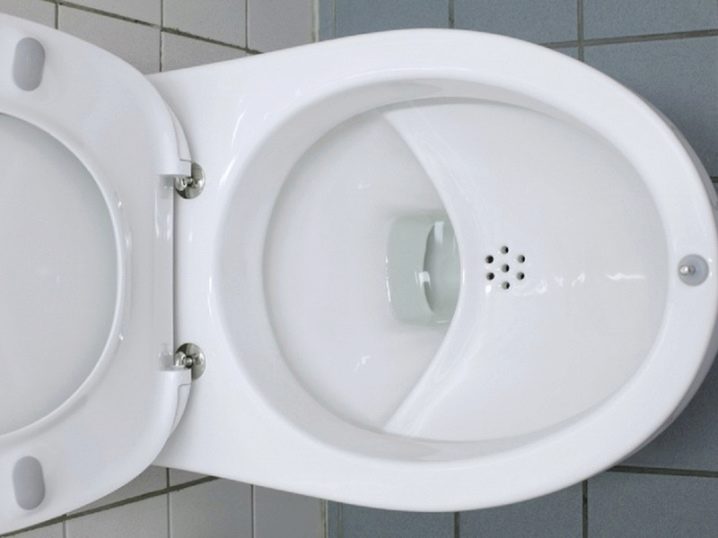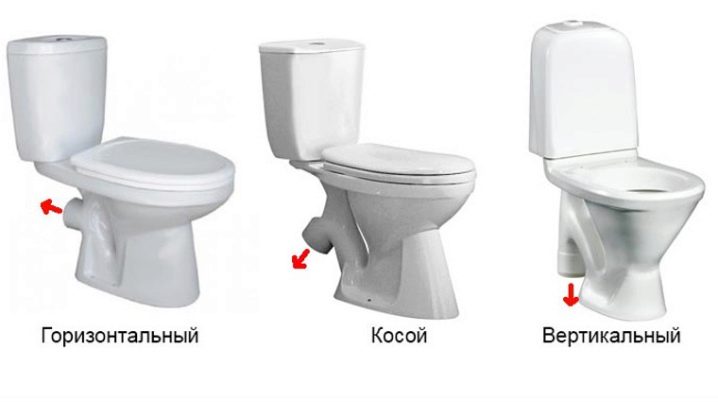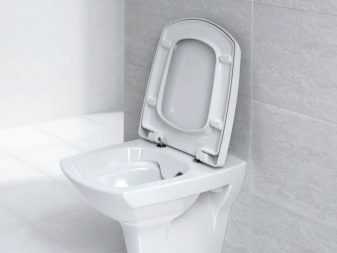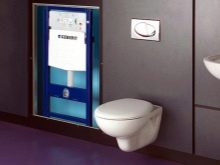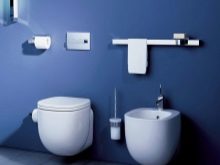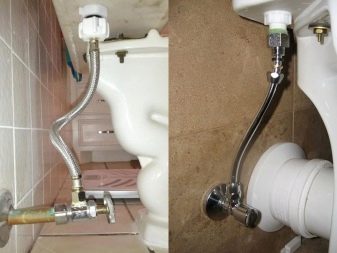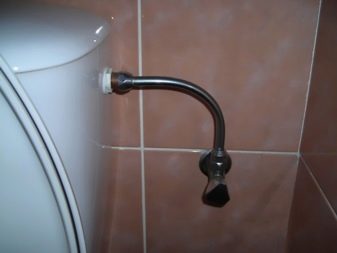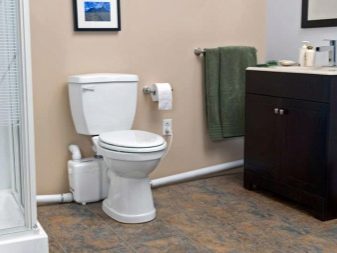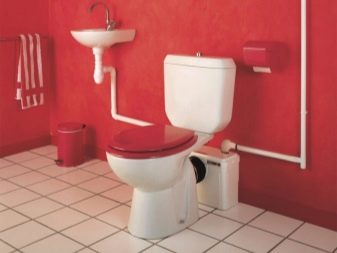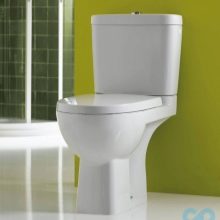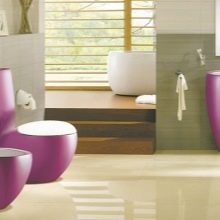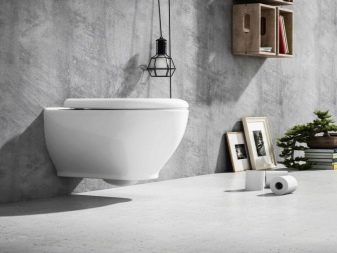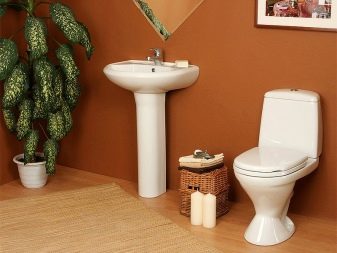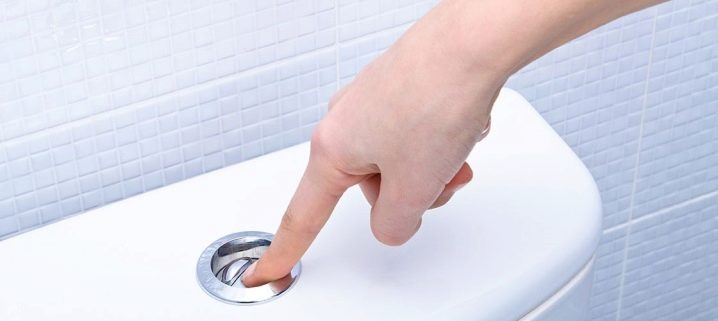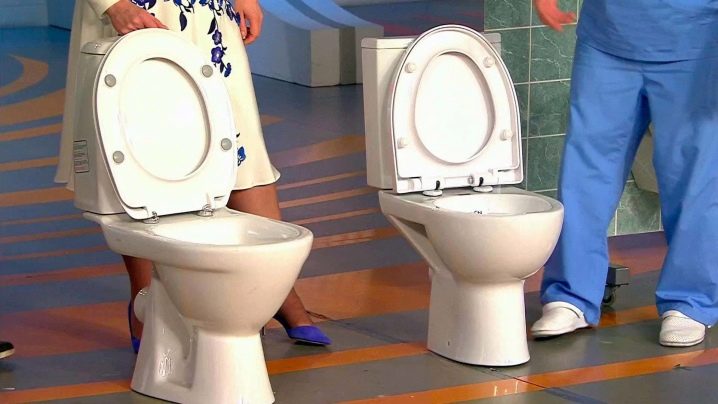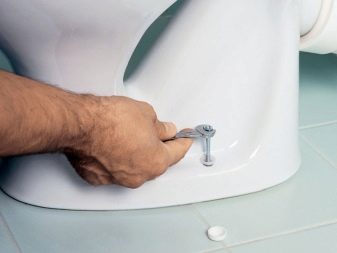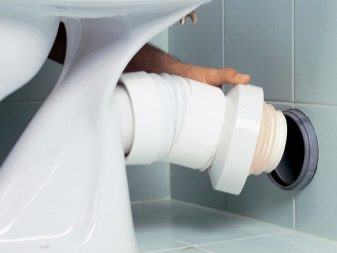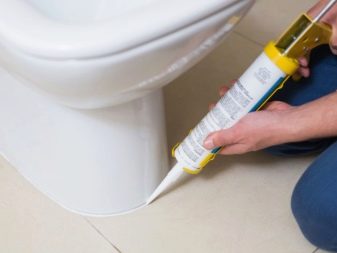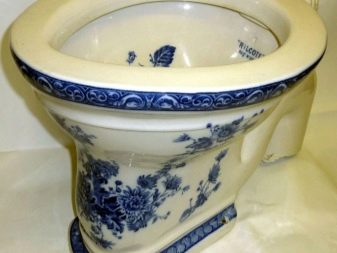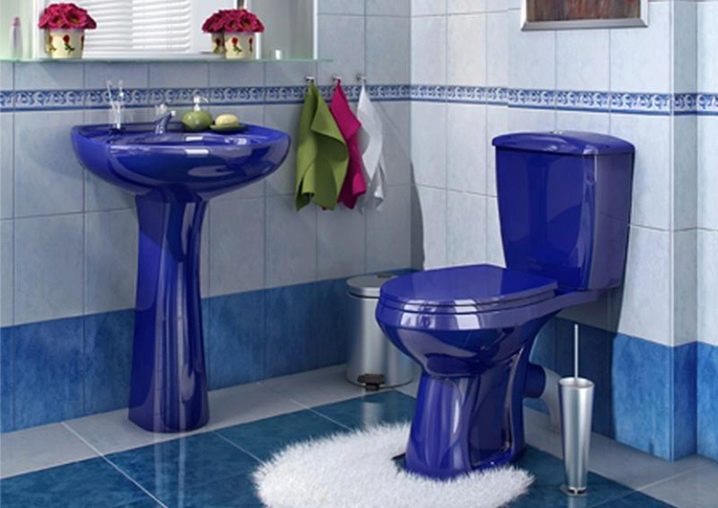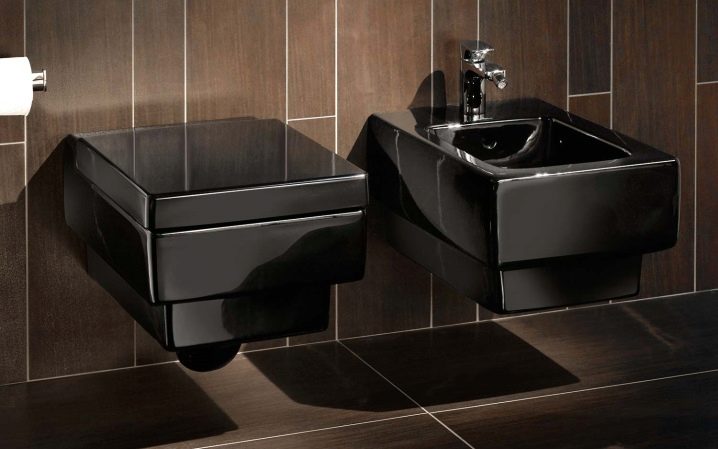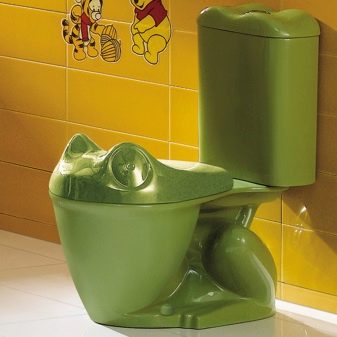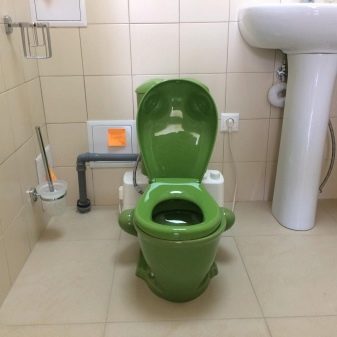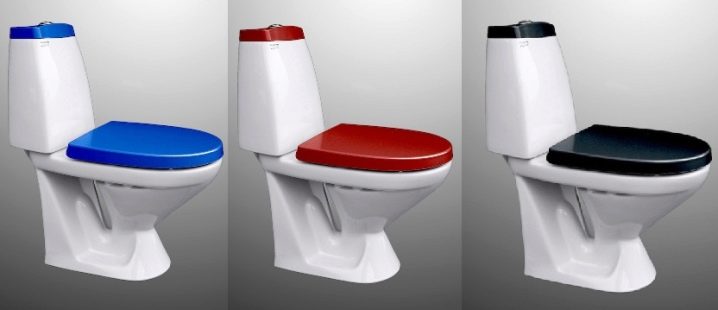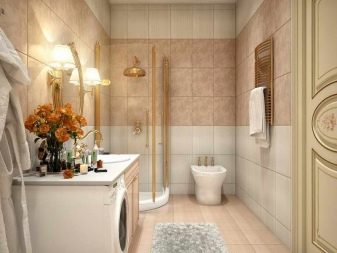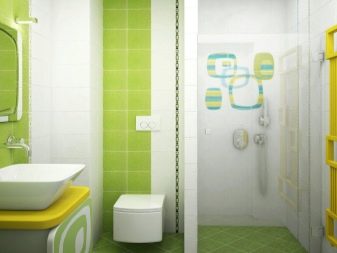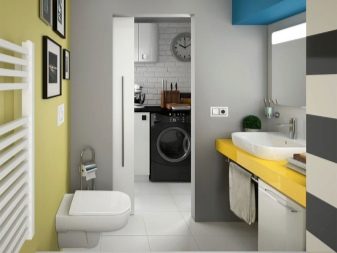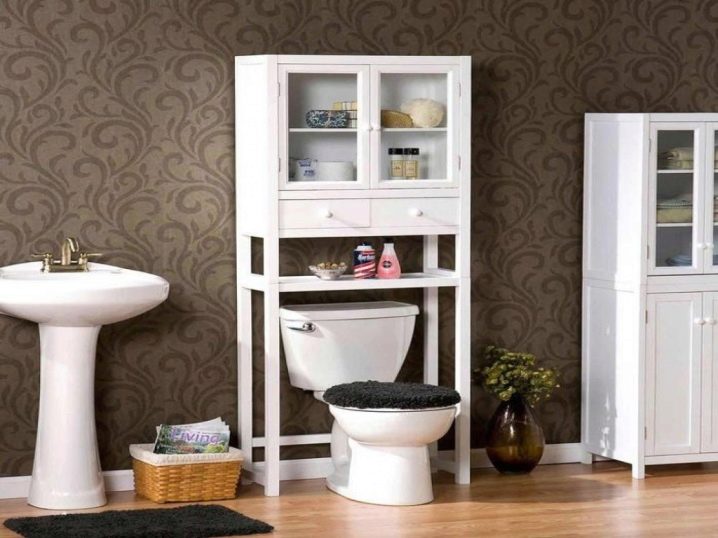How to choose the toilet?
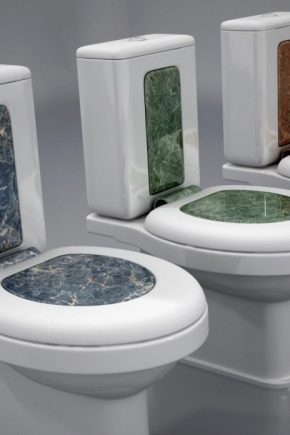
This household item is present in any home, but it is unlikely that the housewarming owners will begin to show off to the guests or proudly show photos to someone. It is about the toilet - an essential attribute of human life. Choosing it is not an easy task, because tens of years of service, ease of use and an attractive appearance are expected from this product.
The importance of choosing the right one
In the Middle Ages, the toilet was a wonder, accessible only to members of the upper classes, having a large wealth. Today it can be seen in the house of almost any person.Despite centuries past, the plumbing functions have not changed, and it is not customary to talk about them in a decent society. However, now with a huge selection of models, differing in design, design and material, it is worthwhile to approach its purchase with particular seriousness.
The toilet should be flush well and without unnecessary splashes, have high strength, serve the owners for many years and organically fit into the design of the bathroom. So that you don’t have to regret and don’t spend huge amounts on replacing the product, you need to take into account a number of important nuances.
Principle of operation
The most popular subject of plumbing is pretty simple: it is based on the principle of the water gate. If you look at the drawing, you can see that the product has various levers, floats and seals inside, which are used to redistribute water. With the help of a hose, water enters the tank, and the shut-off valve controls the entire process: it prevents leakage and closes the flow when the tank is full. In this case, the float is a water level regulator: when the water gets below the level, the float opens the tap and the water flows again.Then, at the required moment, flushing occurs.
A typical toilet consists of two tanks: an accumulation tank in which water is collected, and a drain bowl where it is spilled. Drain is carried out by pressing the lever that opens the valve, after which the water along with the waste goes into the sewer system. The bowl itself is nothing special, except for the presence of the lower partition, which prevents waste from returning back. All valves, which are responsible for draining and accumulating water, are located inside the cistern and consist of plastic parts and rubber gaskets. Functionally, it is always a float valve and flush. In addition, a protective overflow tube must be available.
An important role is played by the float - during the discharge it goes down. As soon as the part reaches the bottom, the valve is activated, blocking the drain, the set of water begins. The float rises, and as soon as it reaches the top valve, the water supply will stop. A float that moves freely on the surface of the water is part of the float valve. The mechanism also includes a boom that regulates the water supply and a lever that connects it to the float.A vertical tube is often attached to the float valve to reduce noise.
Flushing consists of a rubber pear-shaped valve that prevents water from flowing out of the tank, and thrust that opens this valve. The button is pressed - the valve opens - water washes away the waste in the toilet. The water ended - the valve went down and blocked the hole - the float mechanism started working. Usually, a protective overflow tube is also integrated into the drainage system, which prevents water from flowing over the edge of the tank.
To adjust the maximum amount of water in the tank, you need to change the length of the lever to which the float is attached. In older models, its role is performed by a thick wire, which can simply be bent up or down.
There is also a vacuum toilet that works in a slightly different way: when draining, only 1 liter of fluid and air is used, while traditional models can spend up to 8 liters in one “session”. Air supply in such plumbing is regulated by a special pump that creates a vacuum.
There is also a toilet without a cistern with a very unusual drain system. Such a toilet bowl has a pipe section with a button at the top instead of a cistern. The drain is due to a special cartridge, the two parts of which create a pressure difference. When it stabilizes in both chambers, the spring that previously blocked the water is triggered, and it is fed to the toilet. The bezbachkovaya system, of course, saves space, as well as time - you do not have to wait until the tank is filled, water comes immediately from the water supply system.
However, such toilets will not be able to work normally in Russia, as our water supply systems are not able to provide the necessary pressure. In addition, for some people they may seem too noisy.
Kinds
Since plumbing manufacturers are constantly working to improve their products, there is a wide variety of modern toilet bowls, including very unusual ones.
Compact designs are considered the most sought-after designs due to their low cost, ease of installation, and ease of use. The tanks of these devices are placed on a special shelf next to the bowl. They are controlled by pressing a lever or a button.Compacts are also angular, which allows them to be placed even in a very small bathroom.
A kind of compact is a candy bar, in which the bowl is combined with a barrel. This toilet is very easy to use and is more reliable because it eliminates leakage at the junction of both parts. But it is still worth being careful - if the tank is damaged or the bowl breaks, you will have to change the whole structure.
Estets prefer “old” retro-models, in which the tank is high above the bowl, and in order to wash it off, you have to pull the string or chain. They have a high cost, as they are usually made to order with a unique design.
Wall mounted toilet bowls are compact and very stylish, but the installation of such a structure is rather complicated. The tank is mounted in the wall, and the toilet itself is hung on the wall. Thus, there is no leg, and a traditional tank, so the model is easy and quick to care for.
Combined models combine toilets and bidets. Such models are comfortable and not cheap. In addition, the use of such a toilet is more hygienic than the use of paper.
Electronic toilet has a backlight and electric control. Typically, such products are additionally equipped with an automatic washing system and a heated seat.
Toilets differ by type of bowl: visor, funnel-shaped or dish-shaped. However, the appearance of such plumbing will be almost the same. But there is an opportunity to purchase a toilet bowl with a square bowl - if you are fans of the cubism style, then in combination with a rectangular sink such a product will make an ideal designer composition.
Relatively recently in the UK, the first folding toilet Iota was created, which saves water consumption by almost 50%. It uses a mechanism capable of translating the product into a vertical position. The tank closes like a sea shell, and the sealing process takes place. The air cleaning function works and disinfection with a special foam begins.
Vandal-proof toilet is often installed in public places due to its durability and reliability. It has a robust design and is made of resistant materials, such as stainless and enameled steel or alloys of copper and iron.
Among unusual types of toilet bowls, there is a toilet for two, a mobile toilet, a device in the form of cartoon characters and with built-in gadgets. Toilet bowls are decorated with rhinestones, painted and painted with inscriptions.
The market comes a lot of models of "smart" toilets. Some of them help save toilet paper, as they have a kind of shower inside. The water is automatically heated to body temperature, and the shower moves out when you press the button. Some models are also equipped with a hairdryer.
Japanese engineers put into production toilets, the lid of which rises independently when a person comes to the plumber. If no attempt is made to sit down, then the toilet seat rises. After using the toilet, an automatic flush occurs, and then the lid closes itself.
Some "smart" toilets, located in elite clinics, immediately produce a urine test and give the result. Other products are able to automatically include light music or the sound of flowing water. On many models, using the control panel, you can start deep cleaning and disinfection, deodorizing the air and changing the seat temperature.
Materials
It is very important to choose the right material from which the toilet will be made. Constructions made of porcelain and earthenware are considered the most popular, but other varieties also find a buyer. It is also worth paying attention to the material from which the cover will be fixed. It is better to choose a solid metal model, otherwise it will quickly loosen.
In general, most often toilet bowls are made from the following materials:
- faience;
- porcelain;
- steel;
- cast iron;
- decorative rock;
- plastic.
Earthenware products are considered the most affordable. Faience is a type of white ceramic with a finely porous structure. In order that this material slightly absorbed moisture, the surface of the toilet bowl is treated with special enamel. She can choose absolutely any color - from white to turquoise, which does not affect the quality of the product at all, but will allow it to be successfully entered into the planned interior.
The main disadvantage of faience toilets is the fact that the protective enamel is erased with certain effects. Faience can be damaged by strong alkalis and acids with active mechanical cleaning using abrasives.As soon as the glazed layer is destroyed, the moisture will begin to be absorbed into the finely porous ceramics and the plumbing durability will greatly decrease. The toilet bowl can even break if a person who is overweight sits on it.
Also, such products better absorb pollution, respectively, they are more difficult to clean. But do not worry - as a rule, the negative effects of faience appear after 10-15 years of operation.
Porcelain toilet bowls, as well as faience, have a common base of white clay. However, due to the additional introduction of feldspar and quartz into the material, porcelain has a higher strength and lower porosity. Such plumbing is also covered with enamel, but it is capable of holding on for a much longer period. Even if the coating is slightly worn down, the structure will not be destroyed. Porcelain toilet bowls can serve up to 60 years, but on average this period is 20-25 years. As for the price, it is capable of almost 2 times higher than the price of sanitary ware from earthenware, and it starts with a mark of 10 thousand rubles.
Steel toilet bowls are very convenient in operation. First, they are made of stainless steel, which does not absorb moisture, and therefore can not be destroyed. Secondly, they have a smooth surface, to which nothing sticks.They are also high-strength models, and therefore are often installed in particularly crowded places with a large flow of not always educated people. The only relative disadvantages of steel plumbing can be called its cost - it significantly exceeds the cost of porcelain samples.
Cast iron toilets do not have much popularity. They are heavy, bulky and able to serve the masters only for a short period of time. Cast iron is also enameled to protect against rust and corrosion, but it still remains a brittle metal. In addition, such a product is cold to the touch and does not have an attractive appearance.
Toilets made of decorative marble or artificial stone can be seen in rich homes wealthy people who even have bathrooms in a certain style, for example, baroque or classicism. The main disadvantage is too high a price. The advantages include a unique design, finish and increased hygiene, if we talk about marble sanitary ware. The surface of the metal is polished so qualitatively that a small amount of water is enough to completely clean it of bacteria and dirt.Usually stone toilet bowls are made to order.
Plastic toilet bowls are made of acrylic. Usually they are chosen by the owners of summer cottages: such plumbing is easily transported and installed, it is inexpensive and just suitable for infrequent use. If there is a desire to install such a product in an apartment, then it is worth remembering that it reacts adversely to temperature changes and cleaning products, is not very strong and, as a result, serves for a short time. However, acrylic allows you to create toilets of unusual shape, so for people of art it can be the most suitable choice.
In addition, there are exotic options of gold, glass, silver, copper, bronze and natural stones, which are not particularly convenient to use for their intended purpose, but they create an unforgettable effect. Such models are made to special order.
Dimensions and weight
Speaking about the size of a standard toilet bowl, the following figures are given. If there is a shelf on which the drain tank is installed, but in the absence of the barrel itself, the length of the plumbing equipment is 60.5 centimeters, and the height is 34 centimeters.In the case of buying a toilet without stand length will be from 33 to 46 centimeters, and height - up to 36 centimeters. To find out the size of a tank construction, it will be necessary to proportionally increase existing indicators. According to European standards, the tank has dimensions of 68 x 36 x 40 centimeters.
A small hanging toilet has the following options: length - from 48 to 70 centimeters, height from 35 to 40 centimeters, and width - from 35 to 37 centimeters. Despite its compactness, such a product can withstand a weight of up to 400 kilograms.
Corner models that save internal space and hide engineering communications have a height of 37 to 43 centimeters, a depth of 72.5 to 79 centimeters and a width of 34.5 to 37.5 centimeters.
The weight of plumbing depends on the material from which it is made. A faience toilet bowl will weigh from 26 to 31 kilograms, porcelain - easier, from 24 to 29 kilograms. The heaviest toilet is made of marble - it weighs from 100 to 150 kilograms. The weight of the toilet bowl, which is made of stainless steel, reaches only 12-19 kilograms. The lightest toilet bowl is made of plastic, its weight is 10.5 kilograms. A standard tank weighs 11 kilograms.
Accessories
Before buying a toilet bowl, you need to decide on the shape of the bowl, the flushing system, the method of attachment and other important components.
From the shape of the bowl depends on the hygiene of the drain and the general appearance of the plumbing, so it is very important to make the right choice.
- Disc. Toilets with this design were common in the USSR. Inside the bowl is a kind of "recess", due to which the number of sprays is reduced. The drain hole is displaced forward, and the water from the drain barrel comes down “along the ladder”. However, such plumbing needs constant cleaning, besides water flows lead to the appearance of rusty strips, which are very difficult to handle. It is worth adding that the dish does not prevent the spread of unpleasant odors. When installing this type, you should contact the specialists to regulate the amount of water used for draining and adjust the operation of the tank.
- Visor. When flushing water in this toilet does not appear spray, also the form reduces the number of unpleasant odors. The hole, as well as in the cup, protrudes, but instead of a deepening a radius bend is created - a “visor”.Plumbing is comfortable and quite versatile.
- Funnel-shaped. In such a bowl a sufficient amount of sprays is formed, but the toilet does not need to be cleaned often. Drain is located almost in the center, so most of the sewage gets there straight. The following descent of water in the drain tank allows you to finally clean the structure. Plumbing of this type has a low price and high hygienic.
An important point that you need to think about before buying is the direction of water flow. There are three options: oblique, when the water enters at an angle, horizontal (straight when sewers are directly led out of the wall) and vertical. This point can be determined by looking at the place of plumbing to the sewer - release. Finding out the house where the sewer pipe and what the size of the bathroom, you can already choose the desired type of issue.
In modern apartments, direct release is usually used, since it makes it possible to install a toilet close to the back wall of a room (the bell should be raised 5-10 centimeters above the floor level). For autonomous sewage systems, for example, in cottages, choose a vertical outlet (the socket is pushed forward, for example, 40-60 centimeters).Oblique release is only suitable for old houses that appeared in the last century, with extensive areas of bathrooms and toilets. Such models are installed in case the socket is either under a slope or very close to the floor surface.
There are two main ways of fixing the toilet: floor and hanging.
Floor plumbing is considered a classic. The foot-base is mounted and fixed in a certain place and then goes into the bowl. Fastening occurs through the use of bolts and nuts. It is also possible to install a “skirt” that will protect the lower base from contamination and which is much easier to clean than the toilet itself.
To save space, suspended toilet bowls are installed, which have no leg, and the structure itself is mounted as close as possible to the wall due to a special metal frame. The tank is hidden in a niche or the so-called false wall. Flushing is carried out by pressing a special button, made out. This plumbing looks very minimalist and modern.
There is also a cross between a floor and wall-hung toilet - a model of the added type.The base is mounted on the floor, but the drain tank goes deep into the wall.
An important point is also the choice of flushing system: direct or reverse circular. In the first case, water flows directly from the drain hole along the wall of the bowl to the drain. This drain also has the name of a cascade or horizontal. Although it is possible to clear the entire bowl with a powerful stream, very often the draining water is not enough to clear the places close to the rim, and you have to use a brush.
The reverse circular flush also has the name of a ring or shower system. Water moves not directly, but along the ring - as a result, it descends evenly throughout the bowl. This flush occurs almost silently and has many advantages, but this plumbing equipment is much more expensive. In addition, there is a risk that the drain holes will become clogged.
Some specialists also identify suction and automatic types of drains. In the first case, the cleaning process begins when you press the pedal. Water to the brim fills the bowl, and then abruptly goes down the drain. In the second case, the discharge process takes place at the expense of an infrared sensor and is launched remotely from the console.In addition, at the toilet without a flush cistern, the drain is started by a special faucet built right into the water pipe.
There are toilets with bottom and side water supply. The first function is much quieter, but the second is cheaper. No less important is the quality of the cover: whether it will be made of polypropylene or duroplast. The first material is fairly inexpensive, lightweight, and even bending. The obvious drawback is that the material is fragile. Duroplast is much stronger and more stable, but more expensive. Many covers also have a special device - a microlift for silently and slowly raising and lowering the cover.
The drain tank can be mounted on the back stand of the toilet bowl or placed on the wall. Thus, they single out joint and separate methods of fastening the barrel.
Often the owners of plumbers complement it with a shredder for the toilet bowl, which is designed to pump out drains. A special pump transports sewage not only horizontally, but also upwards. For his work only the most ordinary socket and the traditional water supply and drainage are needed.
In addition, as the name suggests,the shredder also passes sewage through the cutting discs, which are then discharged through the discharge pipe.
The seat and cover are made mainly of plastic. But designer models can also be equipped with wooden models coated with waterproof varnish. Other materials are not applied due to hygiene and comfort considerations.
Manufacturers Overview
Deciding to buy a toilet, it is necessary to understand not only the preferred design, but also the price range and the country of origin. The cost of plumbing will largely depend on whether it is made in Russia or abroad. The final price will be affected by customs duties, technological and raw material resources, and, of course, quality.
Usually there are three price classes available toilets:
- budget;
- average;
- expensive.
To cheap toilet bowls, first of all, are products made in Russia - almost 80% of the volume produced. Judging by the reviews, the quality of such plumbing is quite tolerable, as the low price is determined by the absence of additional costs. Also in this segment are toilet bowls made in China.Their quality is average, but for public spaces such as an office or hospital, it will be just right. The most famous brands are Huida (China), Sanita, and Suntec (Russia).
Toilets of the middle segment - as a rule, Finnish, Czech or Polish. This could include both Spanish and Turkish imports. The cost of such plumbing is usually in the range of 150-250 dollars. The most famous brands are Ido (Finland), Cersanit, Kolo (Poland), Jika (Czech Republic).
At the top of the rating are German, Austrian and Swedish toilet bowls, whose cost ranges from 300-550 dollars. They are of high quality and thus justify the high price. The most famous brands are Gerebit, Villeroy & Boch (Germany), Svedbergs, Gustavsberg (Sweden).
How to pick up?
To choose the right toilet, you need to remember that first of all the product must create comfort - because it will be used daily for various periods of time. In addition, plumbing should be resistant. One of the most qualitative options will be a porcelain toilet with metal fittings, a circular drain and a visor bowl that prevents the appearance of splashes. A good idea would be to install a dosed water tank - using the double button you can choose either an economical or a regular drain.
Being in the store, do not hesitate to sit down on the toilet and assess whether the parameters correspond to the existing requirements of the buyer. For example, you can check its height. Immediately you should choose a quality toilet seat that fits in size - plastic, wooden or leather. It is also possible to purchase a seat with antibacterial coating and “microlift”, silently lowering the lid. Prefer rounded plumbing to avoid their own damage and simplify cleaning.
However, the best solution would be to order an individual toilet with heating and lighting, silent water supply and, possibly, automatic control.
Installation Tips
Those who wish to install a toilet with their own hands should, first of all, deal with some important nuances. Of course, any toilet is equipped with an assembly scheme, which should be followed. Particular attention is paid to the installation process of the float, as it will be the task of regulating the pressure and water level in the tank.
At the preliminary stage, it is necessary to check the presence of all components, and also if there are no chips or cracks.In addition, it is necessary to verify the operability of the closure float valve.
The next step is the assembly of the tank interior: drainage system and intake valve. The latter must be fixed at the bottom of the tank, using a capron nut. We must not forget about the need to install rubber bushings and gaskets under the landing heel.
Then begins the installation of the bowl. If you plan to install on a wooden floor, you must first strengthen the structure so that the toilet is attached to the board, fixed on the logs. All wood should be covered with a special solution and painted.
If the installation is on tile, then a wooden backing is optional. Fastening is carried out to an absolutely flat surface on the anchor bolts. First, the bowl is placed in the chosen place and the mounting holes are selected using a marker. Then they are drilled with a diamond drill, dowels are inserted into the holes and a bowl is finally mounted. If the tile is tiled in the room, then you must first drill the top tile layer, and then turn on the hammer drill mode.
If the toilet pipe can not be directly installed in the drain hole, then a corrugated pipe with a rubber sleeve is used.To do this, the first step is to clean the drain hole of debris, wipe with a rag and lubricate with sealant, which is also applied to the sleeve. Next, the corrugation is connected to the sewer pipe, and the other end is connected to the toilet pipe.
If there is no need to use a corrugation, then you should use a fan pipe. Installation of the adapter will be either in the floor (oblique release), or at right angles to the wall (vertical release), or at an angle of 40 degrees to the wall (horizontal release). Next, you need to turn on the water by turning the stop valve, and make sure that there are no leaks. You can also secure the drain tank with bolts that protect against corrosion.
The last stage is the installation of the seat, after connecting to the water supply and checking plumbing. As a rule, there are already two mounting holes in the back of the bowl, into which it is necessary to insert the studs of the seat and clamp the bottom with plastic nuts. If necessary, the seat is adjusted to exactly match the shape of the bowl. In the final sealant is applied around the base of the toilet. Sponge smoothes out all the irregularities, thus the design is given in a neat appearance.
Silicone sealant will harden for 6 hours, therefore during this time it is not recommended to use the toilet bowl.
Installation of a suspended toilet bowl is recommended before the start of finishing works in the toilet room. The design is attached only to the main wall, capable of withstanding high loads. The toilet bowl is placed at a height of 40 centimeters above the floor on a rigid frame. A rigid pipe is used to supply water, and a corrugation is used for release. When filling a niche, you must leave access to the tank for maintenance or troubleshooting.
Beautiful examples in the interior
A white toilet with a “Gzhel” pattern will look great in a spacious bathroom with plain tiles. It is also worth adding interior accessories in the same color scheme.
With the help of a color toilet bowl it is possible to zone a combined bathroom. Having added to it decorative materials, it will turn out to allocate a separate functional zone.
Black curtain toilet, complemented by the same black sink, will create a stylish and memorable space. For tiles it is worth using contrasting colors.
Plumbing marsh color in the shape of a frog perfectly fit into the children's bathroom. Also do not forget about the bright tiles with cartoon characters.
Colored seats and lids of the toilet bowl will allow you to constantly experiment with the interior of the bathroom. A new style can always be added with new accessories - a brush and a stand for toilet paper.
Also originally look colored cisterns for the toilet. If you want to freshen up the interior, you just need to replace the toilet bowl with a color one to match the tile.
Pastel shades look good in small bathrooms. Bright colors such as mint or turquoise are used to emphasize the texture of each item in the room and create a cool atmosphere.
Ecostyle requires an attached white toilet bowl with a square bowl and light green "stains" on the walls. Do not forget about accessories made of natural wood and stones.
If you want to arrange the toilet by Feng Shui, then for the toilet you need to choose colors that are combined with the element of water. For example, blue, white and green shades.
To optimize the small space of the toilet room, behind the toilet, you can put a cabinet with high legs.It is recommended to keep things of intimate nature and cleaning products.
On how to choose the right toilet, see the following video.
